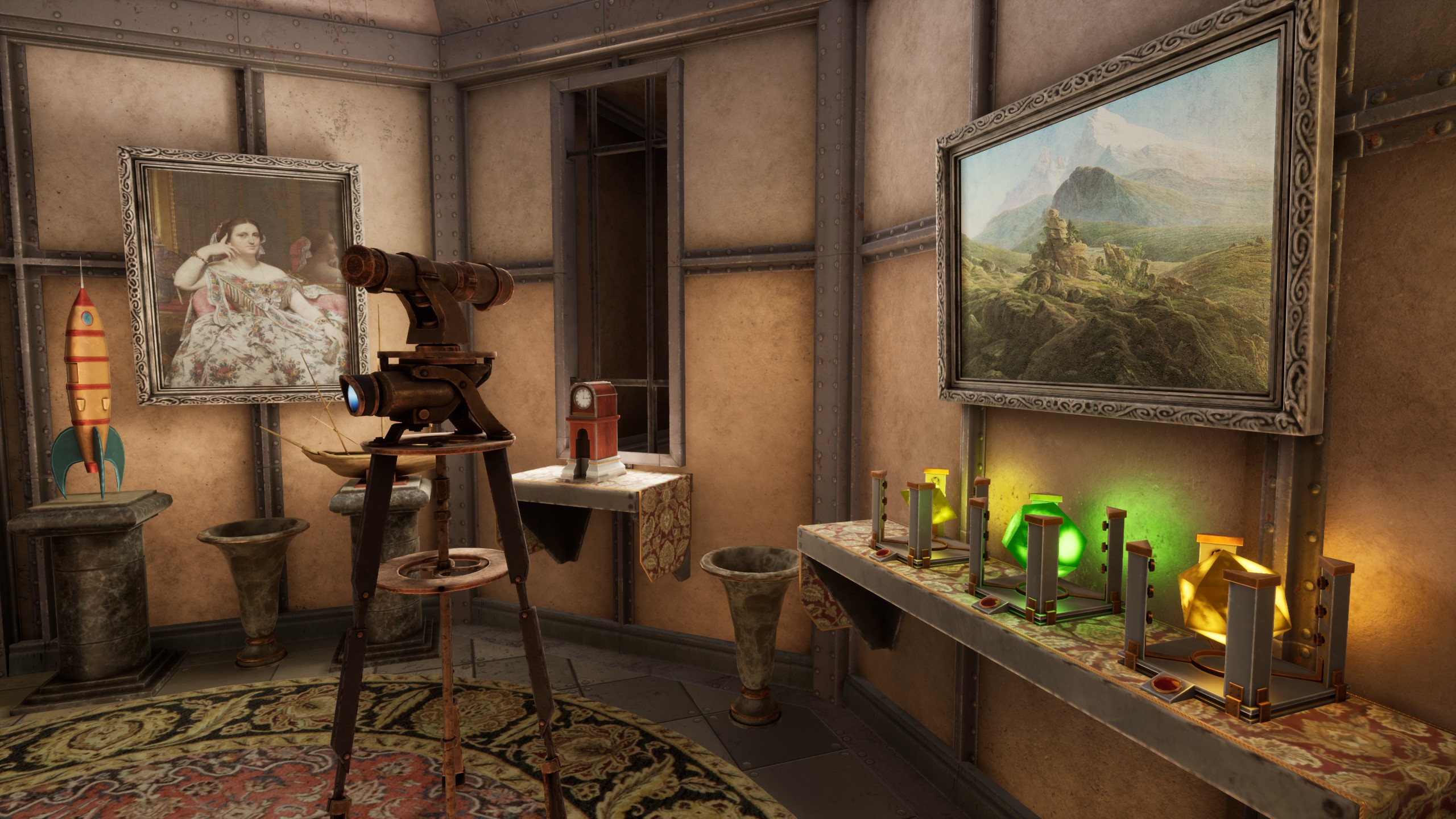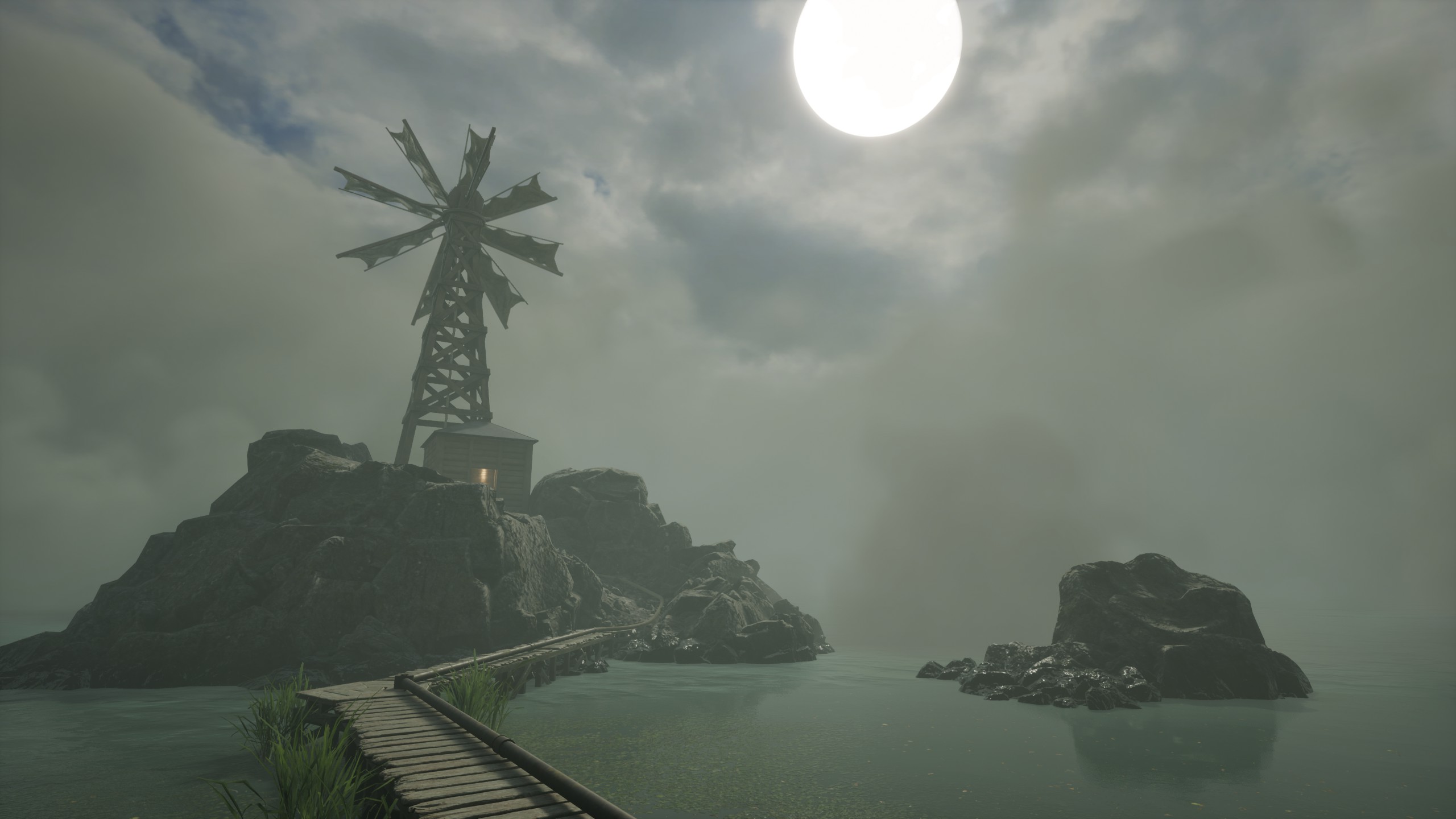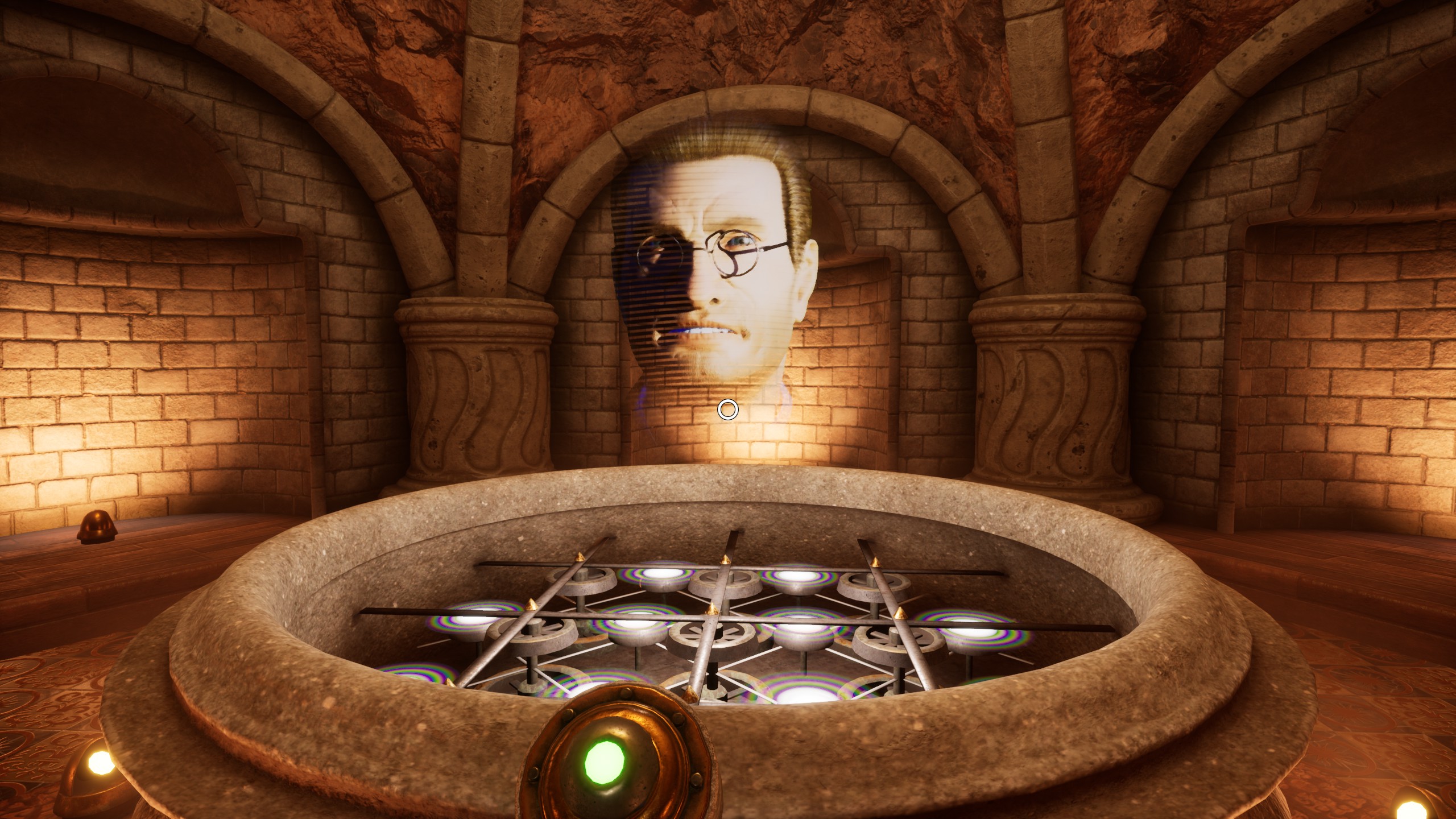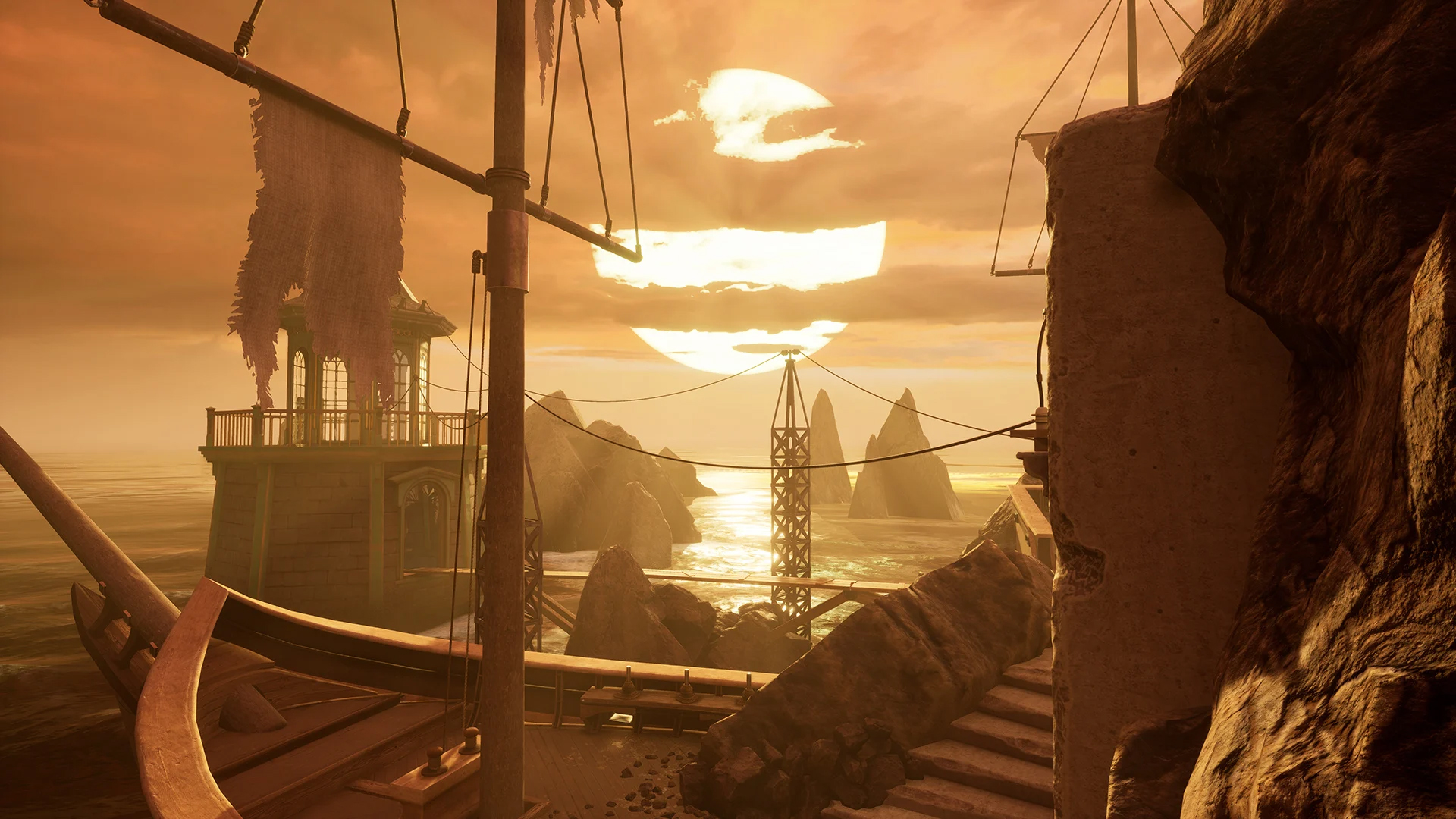Our Verdict
This modern remake of the classic puzzle game doesn't stop it from feeling out of date.
PC Gamer's got your back
Myst was my first PC co-op game. In 1993 my friend Steve and I sat side-by-side in front of my boxy CRT peering in wonder at a game that looked unlike anything else ever made. We walked our way back and forth across beautiful and mysterious islands (well, clicked on static pictures of them, anyway), hunting for pixels to interact with, making notes with pencil and paper, and bashing our brains against a series of ridiculously obtuse puzzles. We never finished.
What is it? A 3D remake of Myst that supports desktop and VR.
Expect to pay: $29.99/£23.79
Developer: Cyan Worlds Inc.
Publisher: Cyan Worlds Inc.
Reviewed on: RTX 2080, Intel i7-9700K , 16GB RAM, Oculus Quest with Link
Multiplayer? No
Link: Official site
It's a little weird to be back in Myst in 2021, after all this time. Cyan Worlds has completely remade the game (again, following 2000's realMyst and 2014's realMyst: Masterpiece Edition, neither of which I played). And this new 3D Myst works on both desktop and in VR, so I got to spend time actually (virtually) walking around in it. As a remake, Myst is a faithful one, but maybe a bit too faithful. Cyan Worlds say it's a "reimagined" Myst, but while it's far more modern-looking it's still almost exactly the same game. Myst, no matter how it looks in 2021, feels pretty outdated.
Island getaway
In case you haven't had a chance to play one of the many versions of Myst in the past 28 years, the adventure game begins with you trapped on a strange island after reading a strange book. To gather the missing pages of the book and discover the story of the island and the family who once inhabited it, players need to solve elaborate puzzles that transport them to new islands, where they complete even more puzzles in order to return. There's a bit of story and lore told through books, notes, and holograms (originally they were cheesy FMV, now they're cheesy CG) but Myst is mostly built from puzzles, not stories.

It is nice to be able to actually walk through the world this time, and for a while it's novel experiencing a familiar place in a new way, wandering from puzzle to puzzle rather than just clicking on static images when I want to move around. At the same time it highlights how even a freshly rebuilt game can still feel a bit out of date because Myst is a lovely place, but it's not a big place. Everything on the islands are just a few steps away from everything else, and after playing countless games set on islands over the years, especially other puzzle games like The Witness, the world of Myst today just feels… small. Shockingly small. Even under blue skies and the shining sun, playing Myst is like standing in an escape room where the boundaries are never more than a few feet away. The islands of Animal Crossing feel sprawling in comparison.
Puzzles are just the same as they were in the original, though you can randomize them if you want to play again with a new challenge. As they did in 1993, the puzzles can be fairly straightforward, punishingly difficult, or somewhere in between. Since clues to the solution of a single puzzle may be located in several different areas, it's an exercise in wandering around and staring at things, wandering some more and doing more staring, experimenting a little here and there, and then wandering back through everything again to see if there's something you missed. I definitely don't have the patience I once did for the rougher puzzles, and it's a real challenge to flip through pages and pages of codes or push a button for the 120th time to see absolutely nothing useful happen without opening a browser and looking for a walkthrough.

There's still a lot to enjoy, though, and plenty of clever puzzle design. Sometimes simple observation can get you a long way toward solving a puzzle, like noticing a locked rocketship is connected to a brick bunker by an electrical wire.
Sound often comes into play, which I really love, like a distant clunking sound while turning a wheel in a cabin, or the hum of a wire that lets you know a current is running through it, or an underground train puzzle where sounds play at the track intersections and combine with one another to give you directions. Solving a puzzle, or even figuring out what the puzzle wants from you, results in plenty of happy eureka moments, not just from feeling smart but from having resisted the urge to cheat by looking up the answers.
Pretty pictures
In VR it's nice to see Myst from a new perspective, and even just on desktop it's a beautiful looking game: hypnotic ocean waves lapping at the shore, clouds rolling overhead, and a few nice details like a small green frog hopping along a bridge in the woods. But even with this modern facelift, the world of Myst remains mostly static, and even in 3D it still feels more like a painting of a place than an actual place.
And while a photomode has been added so you can take pictures of puzzle clues to use as reference, I still can't really imagine trying to solve the game in VR. There's no way taking pictures can replace using a pen and paper to scribble down notes, something that would be exceptionally difficult to do while holding controllers and wearing a headset.

Some of the PC options don't feel so modern, either. Keyboard controls can't be remapped, and while there aren't a ton of controls it would still be a nice option. You're also limited to a couple save slots and a single autosave, which seems like something out of the 1990s as well.
It's perfectly nice to revisit Myst after all these years, but even in the 3D the classic puzzle slideshow still feels like a series of pretty pictures to be looked at rather than a real location to visit. If you've got an itch to revisit Myst, this is the version I'd suggest trying, as long as you're not expecting something altogether different (or even a little bit different) than the 1993 original.
This modern remake of the classic puzzle game doesn't stop it from feeling out of date.

Chris started playing PC games in the 1980s, started writing about them in the early 2000s, and (finally) started getting paid to write about them in the late 2000s. Following a few years as a regular freelancer, PC Gamer hired him in 2014, probably so he'd stop emailing them asking for more work. Chris has a love-hate relationship with survival games and an unhealthy fascination with the inner lives of NPCs. He's also a fan of offbeat simulation games, mods, and ignoring storylines in RPGs so he can make up his own.


